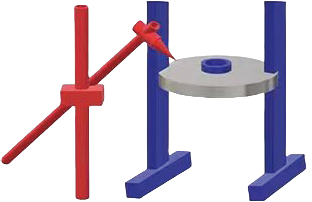Before startup, none of these checks can be omitted
- Equipment body inspection: Check whether the rotating mechanism and tilting mechanism of the welding positioner are flexible and free from jamming. Inspect whether the bolts at each connection part are tight; if loose, tighten them in time to prevent the workpiece from falling off during operation. Meanwhile, confirm that the grounding device of the equipment is reliable, and the grounding resistance should meet relevant standards (generally not greater than 4Ω) to avoid the risk of electric leakage.
- Electrical system inspection: Check whether the power cord is damaged or aged, and whether the plug and socket are in good condition. Test whether the control buttons and indicator lights work normally to ensure the reliable operation of functions such as starting, stopping, and speed regulation of the equipment. For positioners with servo motors or frequency conversion speed regulation, check whether the motor runs smoothly and without abnormal noise.
- Workpiece clamping inspection: Select appropriate fixtures for clamping according to the shape and weight of the workpiece. During clamping, ensure that the workpiece is firm and reliable, and its center of gravity is as coincident as possible with the rotation center of the positioner to prevent shaking or toppling during rotation. For irregular workpieces, auxiliary supports can be used for fixation.
During operation, standardized procedures are key to safety
- Test operation is essential: Before formal welding, a test operation should be carried out. Adjust the positioner to the required working position, observe whether it runs smoothly, and check for abnormal noises or vibrations. At the same time, inspect whether there is interference between the workpiece during operation to ensure sufficient space for welding operations.
- Speed adjustment should be reasonable: Adjust the rotation speed and tilting speed of the positioner reasonably according to the welding process requirements and the size and weight of the workpiece. Excessively high speed may cause the workpiece to be unstable, affecting welding quality; excessively low speed will reduce work efficiency. When adjusting the speed, do it gradually to avoid sudden speed changes.
- Coordination is needed in collaborative operations: If the welding positioner works in collaboration with equipment such as welding robots and welding manipulators, it is necessary to ensure that the actions of each equipment are coordinated. Operators should be familiar with the control methods and operating rules of each equipment to avoid equipment damage or safety accidents caused by action conflicts. During collaborative operations, maintain close communication and transmit operation instructions in a timely manner.
Environment and maintenance affect equipment life and operational safety
- Work environment control: The welding positioner should work in a dry and well-ventilated environment, and avoid use in humid environments with excessive dust or corrosive gases. The workplace should be kept clean and free from clutter accumulation to ensure sufficient activity space for operators. When working outdoors, take protective measures such as rainproof and sunproof.
- Regular maintenance: Carry out regular maintenance on the welding positioner in accordance with the equipment manual. Regularly clean up dust, welding slag, and other debris on the surface of the equipment, and add lubricating oil or grease to each moving part to reduce wear. Inspect the wear of each component and replace them in time if damaged. For the electrical system, conduct regular insulation testing to ensure its good insulation performance.
Emergency handling can avoid dangers at critical moments
During the operation of the welding positioner, if abnormal situations occur, such as abnormal equipment noise, severe vibration, or loose workpieces, the operator should immediately stop the equipment, cut off the power supply, and conduct inspection and handling. It is strictly forbidden to perform maintenance or adjustment while the equipment is running. In case of emergencies such as electric leakage or fire, start the emergency plan immediately, take corresponding measures such as fire extinguishing and power cutoff, and report to the relevant departments in a timely manner.
Summary: Safety and standardization are the core
The safe use of welding positioners is inseparable from careful inspection before startup, standardized procedures during operation, a good working environment, and regular maintenance. Operators must strictly abide by relevant regulations, remain vigilant at all times, ensure the normal operation of the equipment and their own safety, and at the same time ensure the stability and reliability of welding quality. Only by implementing every precaution can the role of the welding positioner be fully exerted, and the efficiency and safety of welding operations be improved.



